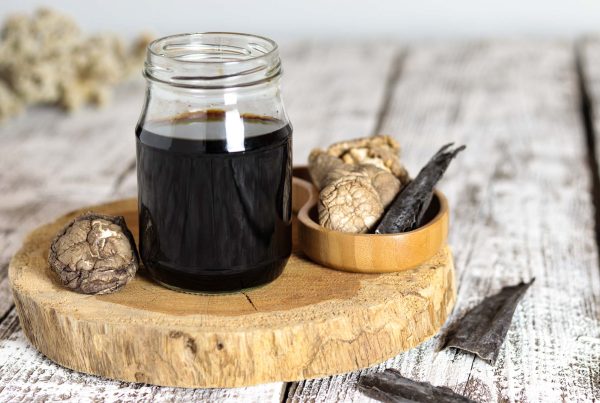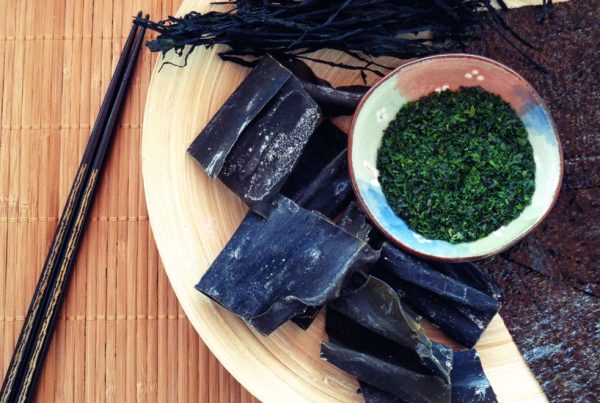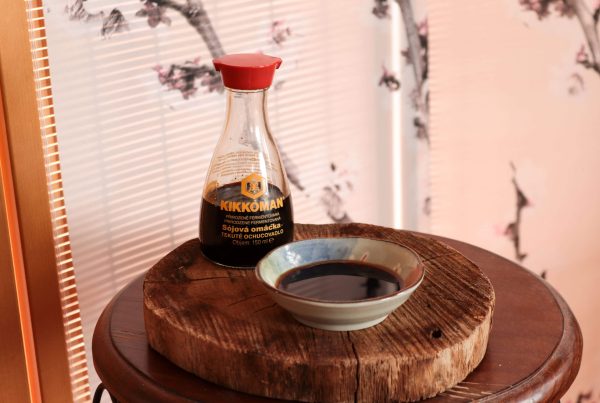
Dokudami – the herb that never dies out – is believed to absorb illness from the earth and cleanse not only the body, but also negative energy. These are the qualities traditionally attributed to the Dokudami plant. It is most commonly processed into tea, but is also used in traditional medicine and cosmetics. Although still little known — almost entirely unknown — in our region, it can be grown very easily, without any special care.
What is Dokudami?
Dokudami, known scientifically as Houttuynia cordata (Japanese: ドクダミ), is a fascinating herb native to Asia that has played an important role for centuries in traditional Japanese, Chinese, and Korean medicine. In Japanese, the word “dokudami” literally means “poison remover” — and that’s no coincidence. This plant has long been used to treat a variety of health issues and support the body’s natural detoxification processes.
Dokudami typically grows in shady, moist areas — along streams, at the edges of gardens, and in damp soil. In Japan, it can be found not only in the wild but also in traditional gardens, where people cultivate it for its healing properties.
What Does Dokudami Look, Taste, and Smell Like?
Though it may seem unremarkable at first glance, dokudami has several distinctive features:
Appearance:
- Leaves: Heart-shaped, dark green, sometimes with purplish hues, approximately 4–6 cm in size.
- Flowers: Small white blossoms that bloom primarily from May to July.
- Growth: A low-growing plant that spreads quickly through underground runners, forming dense patches.
Perhaps the most striking feature of dokudami is its strong aroma, which may not appeal to everyone. Many describe it as a spicy, earthy scent with a slightly fishy undertone. It is indeed aromatic, though personally I don’t find the fishy note that pronounced.
Flavor
The taste of dokudami is earthy and slightly bitter with hints of spice and citrus. When dried or brewed into tea, the flavor becomes milder and more pleasantly astringent. Some compare it to cilantro, while others liken it to a mild herbaceous umami profile.
Can You Grow Dokudami at Home?
If you’re intrigued by dokudami and wondering whether you can grow it at home — good news: yes, you can! It’s not a difficult plant to cultivate. In fact, it’s known for thriving even in less-than-ideal conditions. In Japan, it’s often called shikō-yakuyō-sō — a “medicinal weed” — not typically prized for its beauty, but definitely valued for its usefulness.
Growing Conditions:
- Soil: Prefers moist, well-draining soil rich in organic matter. It’s adaptable to different soil types but doesn’t tolerate standing water.
- Light: Thrives in partial to full shade. Direct sun can cause the leaves to brown.
- Watering: Likes consistently moist conditions. Water regularly to prevent drying out.
Dokudami is native to warmer Asian climates, but it can survive mild winters, especially if planted in a sheltered spot or grown in a pot that you can move indoors during colder months. It’s frost-hardy to around -10 °C. We personally have it planted by the well in our yard — directly in the soil, not in a container — and it thrives with minimal care.
When and How to Plant:
- Propagate by root division or stem cuttings.
- Best planting times are spring or early autumn, when the soil is moist.
- You can root cuttings in water or plant them directly into soil.
Growth Rate and Care: Dokudami spreads quickly and easily. To prevent overgrowth, consider planting it in a container or in an area where it can’t spread unchecked.
How to Process Dokudami for Tea
The ideal time to harvest dokudami is in spring and early summer, when the leaves are young, juicy, and full of essential oils. You can pick just the leaves or snip entire stems — it will regrow by the end of the summer.
After harvesting:
- Rinse the leaves thoroughly.
- Dry them in a shaded, well-ventilated area — not in direct sunlight, which can burn the leaves and diminish flavor and aroma.
- Alternatively, use a dehydrator at low temperatures (max. 40 °C) to preserve beneficial compounds.
- Leaves should be crisp and completely dry to avoid mold.
You can store the leaves whole or crush them lightly for quicker brewing. Use airtight containers kept in a dark, dry place to preserve their aroma and potency.
How to Brew Dokudami Tea
- Use 1–2 teaspoons of dried leaves per 250 ml of water.
- Bring water to a boil, let it cool slightly (to 80–90 °C), then pour over the leaves.
- Steep for 5–7 minutes, depending on taste.
TIP: If the aroma is too strong for your liking, blend with other herbs to soften the flavor.
Benefits of Dokudami Tea – Why Try It?
- Detox Support: While our organs (like the liver and kidneys) do the real detox work, dokudami may support these systems by enhancing circulation and gently stimulating digestion. Herbal teas can complement the body’s natural processes but are not a magic cure.
- Anti-inflammatory Properties: May help ease inflammation and pain, useful for those with chronic inflammatory conditions.
- Immune Support: Regular consumption may help strengthen the immune system.
- Digestive Aid: Stimulates digestive enzymes, improving metabolism and easing discomfort.
- Antibacterial & Antiviral: Contains compounds that may help fight infections.
How Often to Drink Dokudami Tea?
To experience its benefits, it’s recommended to drink dokudami tea regularly, about 1–2 cups per day. Start with a smaller amount to see how your body reacts.
For best results, drink consistently for 3 to 6 weeks, then take a break of about 2 weeks before continuing.
Dokudami Tea in Japan
You won’t usually find dokudami tea on restaurant menus in Japan. It has a distinctive flavor and aroma that not everyone enjoys. It’s not a typical refreshing meal-time tea like sencha or hojicha. Instead, it’s viewed more as a health-supportive herbal remedy, commonly prepared at home.
Other Uses of Dokudami – Cosmetics, Medicine, and Food
In Cosmetics: Dokudami is valued in skincare for its anti-inflammatory and antibacterial properties. It’s helpful for acne-prone and irritated skin, supports wound healing, and improves skin texture. It’s commonly found in facial toners and masks. For example, I found a dokudami sheet mask by the Korean brand Innisfree in a Japanese drugstore.

In Traditional Medicine: Beyond tea, dokudami is used topically as a poultice to treat:
- Skin issues like eczema, rashes, and burns
- Joint and muscle inflammation
In the Kitchen: While I haven’t seen it commonly used in Japanese cooking, dokudami leaves can be added to salads, sauces, or soups. You can even prepare dokudami tempura — the leaves battered and deep-fried until crispy.
Interested to discover more about Japanese cooking? Let’s keep in touch on Instagram, Facebook, and Pinterest.
Sharing is caring:




